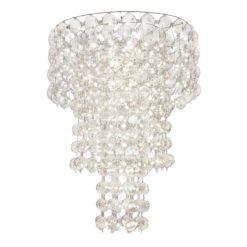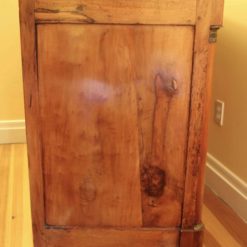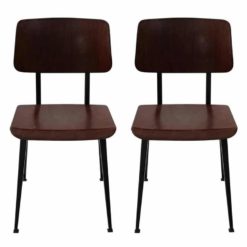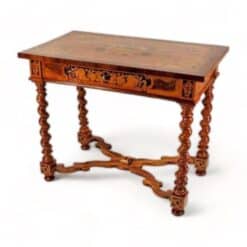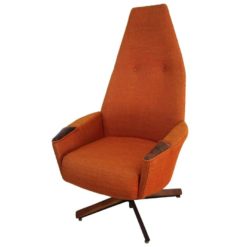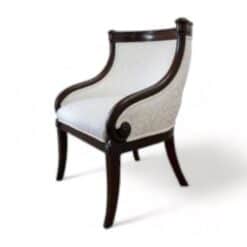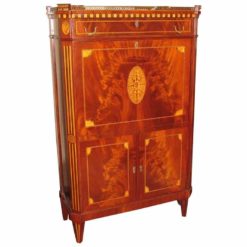Best Sellers
Furniture, Styylish History
Wardrobe or Armoire: Distinctions in Antique Storage
How do I know if I am looking at a wardrobe or armoire? In the canon of art history and antique furniture, certain terms from other languages, especially French and German, appear to describe distinct forms and features from various periods.
In last week’s blog, we discovered the many ways in which a period (the Baroque) has an influence on every corner of artistic society. We have studied the history of antique desks and the style of secretary desks. And we have explored the line between antique and vintage in our interior design journey. Even avant-garde digital art has found a place in our collection.
We want to further explore the distinction between past and present, antique and vintage, historical and contemporary by drawing a new comparison. How can we tell if we are looking at an armoire or a wardrobe?
Linguistic Origins
The word “armoire” is defined as “a wardrobe or movable cabinet, typically one that is ornate or antique” by the Oxford English Dictionary. The word developed out of both French and Old English from the Latin “armarium”, which translates to closet.
In other words, armoire is a fancy term for wardrobe. And as the dictionary definition suggests, the linguistic embellishment is essential to understanding if your closet is an armoire or wardrobe.
The word armoire in English has become far more frequently used since the second half of the 20th century. That suggests that the French word became commonly used in conjunction with a class and quality distinction.
The History of Wardrobes
The word wardrobe originated in Medieval English as a derivative of the French “garderobe”, and literally means “to guard garments”. People of class would commonly store their folded clothing in chests and other low-rise furniture storage.

It was not until royal garments became elaborate, valuable, and ornate that a tall wardrobe evolved. That development can be traced to the early 14th century rule of Edward I, King of England. He wanted to have furniture for hanging garment.
A wardrobe or armoire can be composed of various styles of storage. From drawers and adjustable shelving to large hanging rods and internal cabinets, the layout of wardrobes varies greatly across space and time. Many European countries and artisan traditions contributed their own ideas to the model of the storage closet

The Kas style of wardrobe that evolved in the Netherlands of the 17th century, for instance, comes from the word “kasten”, which loosely translates to “box”. That kind of wardrobe was often used to store large amounts of linens and valuables and was locked by key.
In other words, wardrobes are as historically diverse as they are ubiquitous. You cannot find a place in history, where wardrobes did not play a major role in interior decorating and furniture design.
Enter the Armoire
The earliest armoires were massive decorative showpieces in the castles of royalty and aristocracy. During the Renaissance, they became a little smaller and more decorative. That is where the biggest difference between a common wardrobe and an armoire still lies today: in size and décor.
Armoires tend to be larger, taller wardrobes. They often feature elaborate corners, feet, doors, locks, or other decorative insets. They can be the most imposing pieces of furniture in a room, but they don’t have to be. As you will see, armoires come in all shapes and sizes.
Armoire or Wardrobe: Browsing our Collection

This imposing oak armoire from 18th century France showcases exactly what makes an armoire distinctive. Large, with ornate double doors and wonderfully focused hinge decorations, it is a classic Baroque piece that will elevate your dining room, living room, or master bedroom.

But armoires do not have to be Baroque. This incredibly unique Art Deco armoire is a delightful vintage addition to any living space. If you are as enamored with Art Deco as we are, be sure to check out some of our older blogs on the history, features, and artists of the period.

This open-concept Art Deco wardrobe from the 1920s exemplifies the wide range of objects that wardrobes and armoires can describe. This particular piece can elevate an entrance hall into a gateway of taste and design. Its lacquered black wood mirror can endow your best coats with distinct elegance, even on the wall.

And while we have this breathtaking Biedermeier wardrobe listed as such, you might just as easily call it an armoire. It’s so unforgettable that it encapsulates everything you could wish to find in a show-stopping case piece.
For all intents and purposes, you can use the term wardrobe or armoire to describe similar kinds of pieces. The traditional definition of wardrobe applies to most antique armoires, whereas the form and use of wardrobes has shifted somewhat over the last century.
Interchangeably Decorative
The naming custom of antiques often reflects specific historical periods or movements in design. Sometimes, linguistics allows us to identify something as antique or decorative without calling it so. Calling your antique wardrobe an armoire immediately endows it with ornate quality and a certain level of distinctive class.
Whether Baroque, Biedermeier, Art Deco, or even more contemporary, a true armoire is a treasured addition to any living space. With true storage space, built to last, an armoire can do more than just look stunning: it can guard your garments and treasures while being a treasure itself. Shop our catalogue today to find the perfect high quality storage options for your space.





